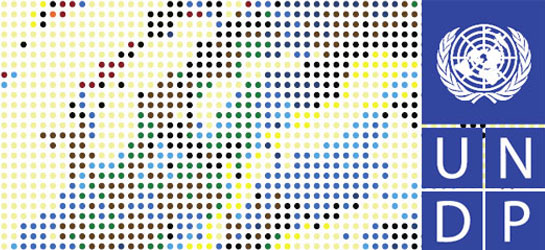
Colombia was awarded its best ranking yet in the United Nations’ 2011 Human Development Index, but is also recognized for its exceptional inequality.
Overall, Colombia ranked 87 out of 187 on the 2011 Human Development Index (HDI), between Armenia and Iran. The United Nations Development Programme grouped Colombia in the “High Human Development Category.” The country with the highest human development ranking was Norway, while the Congo ranked 187.
Last year Colombia ranked 79, but out of 18 fewer countries.
Regionally, Latin America and the Caribbean scored above Sub-Saharan Africa and South Asia, but below the Arab States, East Asia and the Pacific, and Europe and Central Asia. Chile scored the highest in the region, while Haiti scored the lowest.
Colombia’s 87th ranking is a composite of its life expectancy (73.7 years), mean years of schooling (7.3), expected years of schooling (13.6), and gross national income (GNI) per capita ($8,315). The country’s HDI ranking has steadily increased over the past five years.
However, Colombia has one of the highest inequality rates in the world. When Colombia’s HDI is adjusted for inequality, its ranking falls by 24 countries –- the largest ranking disparity in the world.
Poverty and gender inequality
According to the UNDP’s measure of poverty, 6.4% of Colombians are vulnerable to poverty, and 1.1% live in severe poverty. An estimated 2.4% of the population lives without water, 2.6% without adequate sanitation, and 3.6% without modern fuels.
Approximately 45.5% of Colombians live below the national poverty line.
Colombia ranks 91st in gender inequality. Colombian women hold approximately 13.8% of seats in the national government, but are .4% more likely than Colombian men to have at least a secondary education.
Environmental sustainability
Colombia scored 76.8 out of 100 on the UNDP’s environmental performance index. Colombia currently generates about 72.7% of its energy from fossil fuels.
Approximately 6.2% of the country’s GNI comes from natural resource depletion. The UNDP also estimated that 11% of Colombian biodiversity species is endangered.
Environmental threats on human development
The report also measured the human development effects of environmental threats. Approximately 2,300 Colombians die each year from water pollution, 2,622 from indoor air pollution, 2,806 from outdoor air pollution, and one to two from malaria.
On average, natural disasters kill 184 Colombians and affect 666,172 each year.
Perceptions about the environment and well-being
According to the report, 73.1% of Colombian citizens believe that humans cause global warming. Just under a third of the population is satisfied with the national government’s efforts to reduce emissions.
Four out of five Colombians are reportedly satisfied with the water quality in their country, and a fourth are satisfied with the air quality.
On a scale of 1-10, the UNDP said that Colombia scored a 6.4 in overall life satisfaction.
Education and health
The adult literacy rate in Colombia is reportedly 93.2%, and the UNDP estimated that there are 29.3 pupils for every teacher. According to the report, 100% of Colombian schoolteachers have been trained in education.
Approximately 1% of females between the ages of 15-24 and .2% of males have HIV, the report said. Five percent of infants have not been immunized against measles, and 8% against DTP.
An estimated 78% of married Colombian women use some method of contraception. Over 96% of births are reportedly attended to by a skilled health professional.
Population and the economy
The current population in Colombia is estimated at 46.9 million people, a number expected to grow at a rate of 1.9% over the next four years. Three fourths of of the population live in urban areas. The average Colombian is 26.8 years old.
Colombia’s GDP per capita is $8,959, according to the report. Approximately 3% of the country’s GDP comes from foreign direct investment inflows, and 1.8% from remittance inflows.
The UNDP estimated that education and health each account for 6.4% of the Colombian government’s expenditures.

